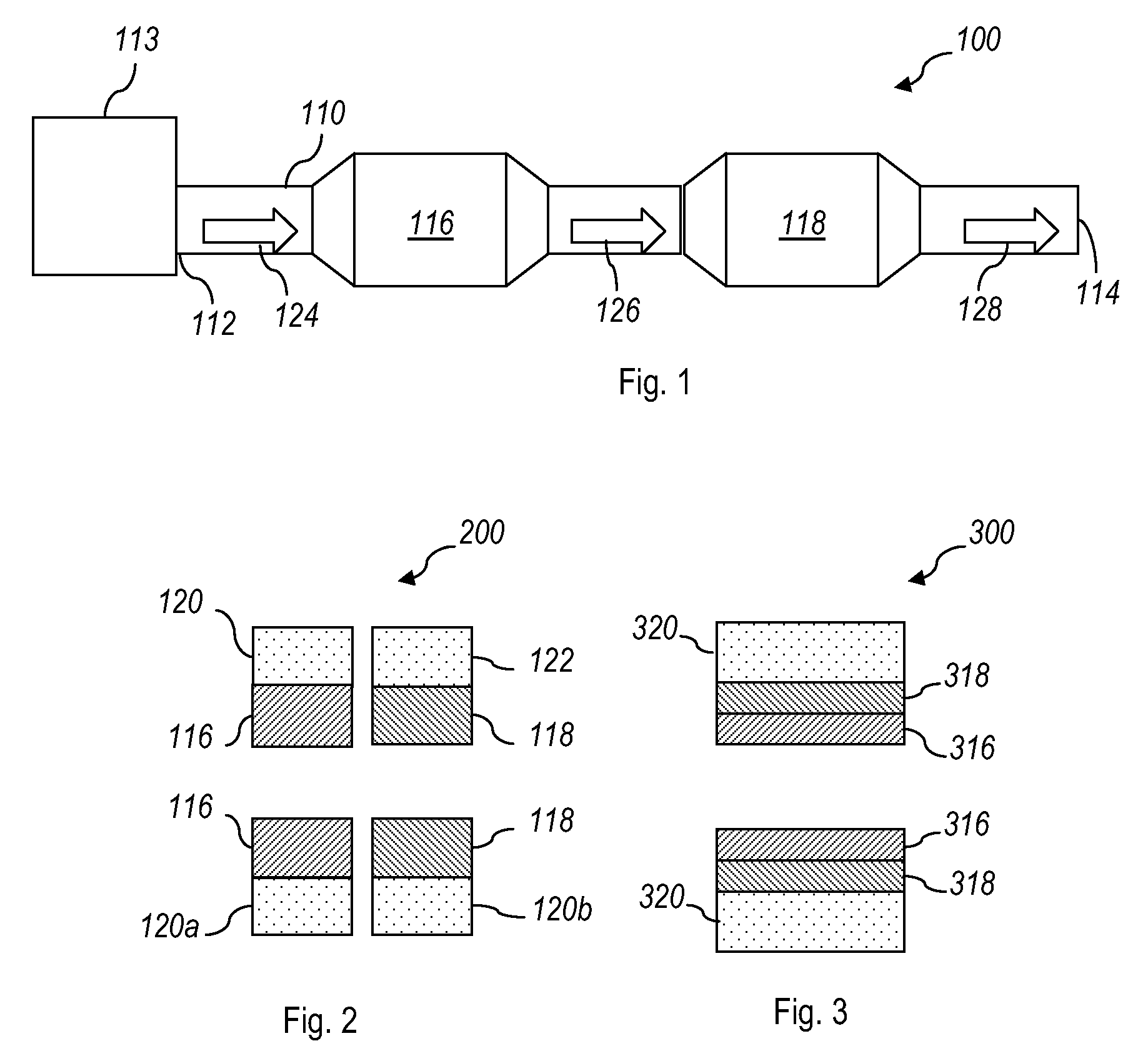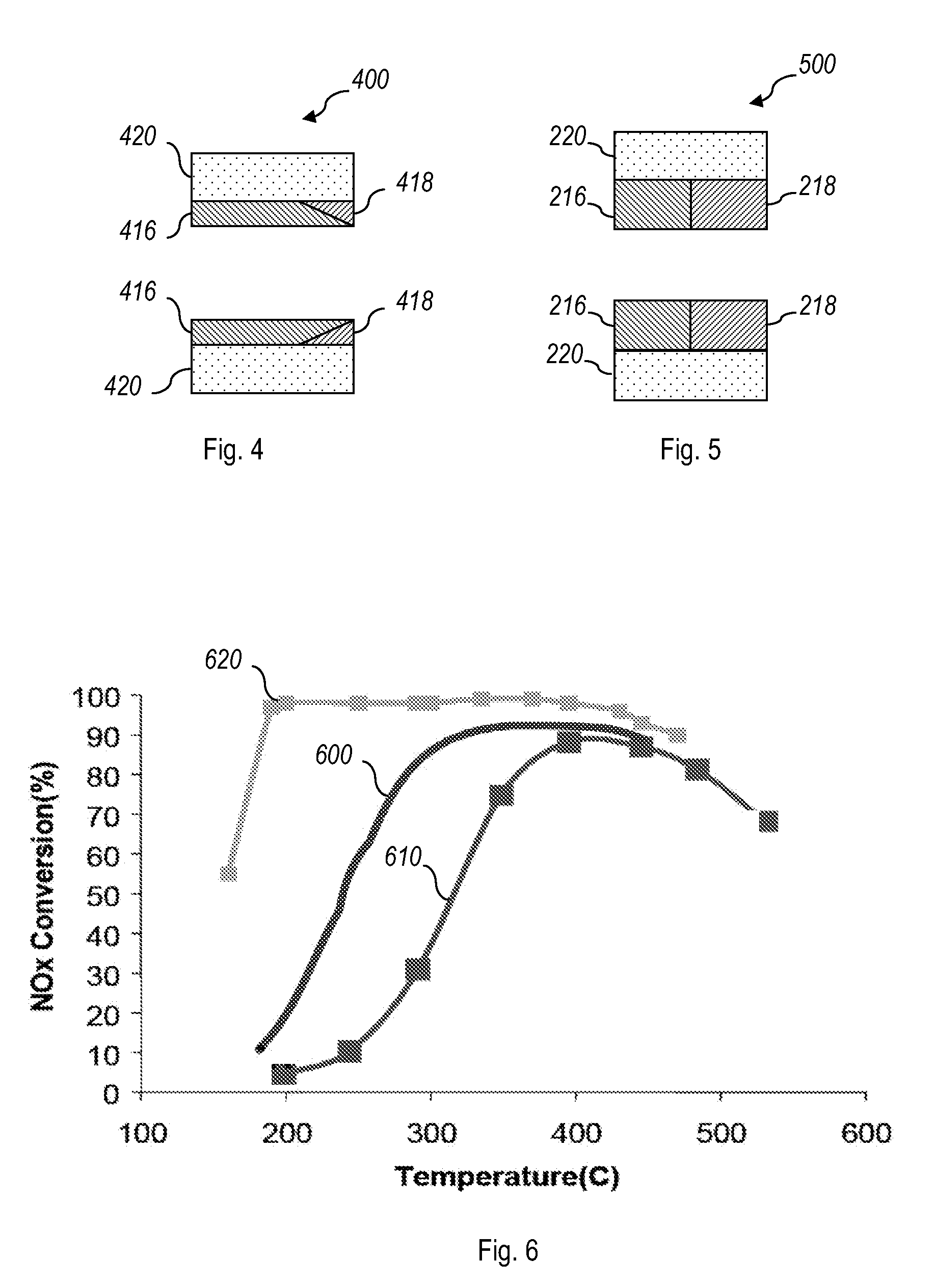CATALYSTS, SYSTEMS, AND METHODS FOR REDUCING NOx IN AN EXHAUST GAS
a technology of exhaust gas and catalyst, applied in the direction of physical/chemical process catalyst, organic compound/hydride/coordination complex catalyst, etc., can solve the problems of reducing the release of nosub>x /sub>, the use of a reservoir to house ammonia, and the relative high emissions of nosub>x /sub>, so as to reduce nox and reduce nox
- Summary
- Abstract
- Description
- Claims
- Application Information
AI Technical Summary
Benefits of technology
Problems solved by technology
Method used
Image
Examples
example
[0058]Example 1 describes an emissions system that includes an HC-SCR catalyst 116 in combination with an NH3-SCR catalyst 118 according to one embodiment. The HC-SCR 116 is positioned upstream from the NH3-SCR 118 in an exhaust system from an internal combustion engine operating on diesel under lean burning conditions. The HC-SCR catalyst 116 may include a silver tungstate supported on a hydroxylated alumina support and having a silver tungstate loading of 2.5 g / in3. The NH3-SCR catalyst 118 may include an iron zeolite with an iron loading of 3.0 g / in3.
[0059]A hydrocarbon reductant is introduced into the exhaust gas stream 124 above the HC-SCR catalyst 116 and acts as a reductant in the conversion of NOx to N2 in the presence of the HC-SCR catalyst 116. Testing is carried out with a space velocity of 60,000 h−1, 10% oxygen in the initial gas stream, and diesel as the hydrocarbon reductant at a C1 to NOx ratio of 10. Catalyst performance is tested using a down ramp method starting a...
PUM
| Property | Measurement | Unit |
|---|---|---|
| concentration | aaaaa | aaaaa |
| temperatures | aaaaa | aaaaa |
Abstract
Description
Claims
Application Information
 Login to View More
Login to View More - R&D
- Intellectual Property
- Life Sciences
- Materials
- Tech Scout
- Unparalleled Data Quality
- Higher Quality Content
- 60% Fewer Hallucinations
Browse by: Latest US Patents, China's latest patents, Technical Efficacy Thesaurus, Application Domain, Technology Topic, Popular Technical Reports.
© 2025 PatSnap. All rights reserved.Legal|Privacy policy|Modern Slavery Act Transparency Statement|Sitemap|About US| Contact US: help@patsnap.com



